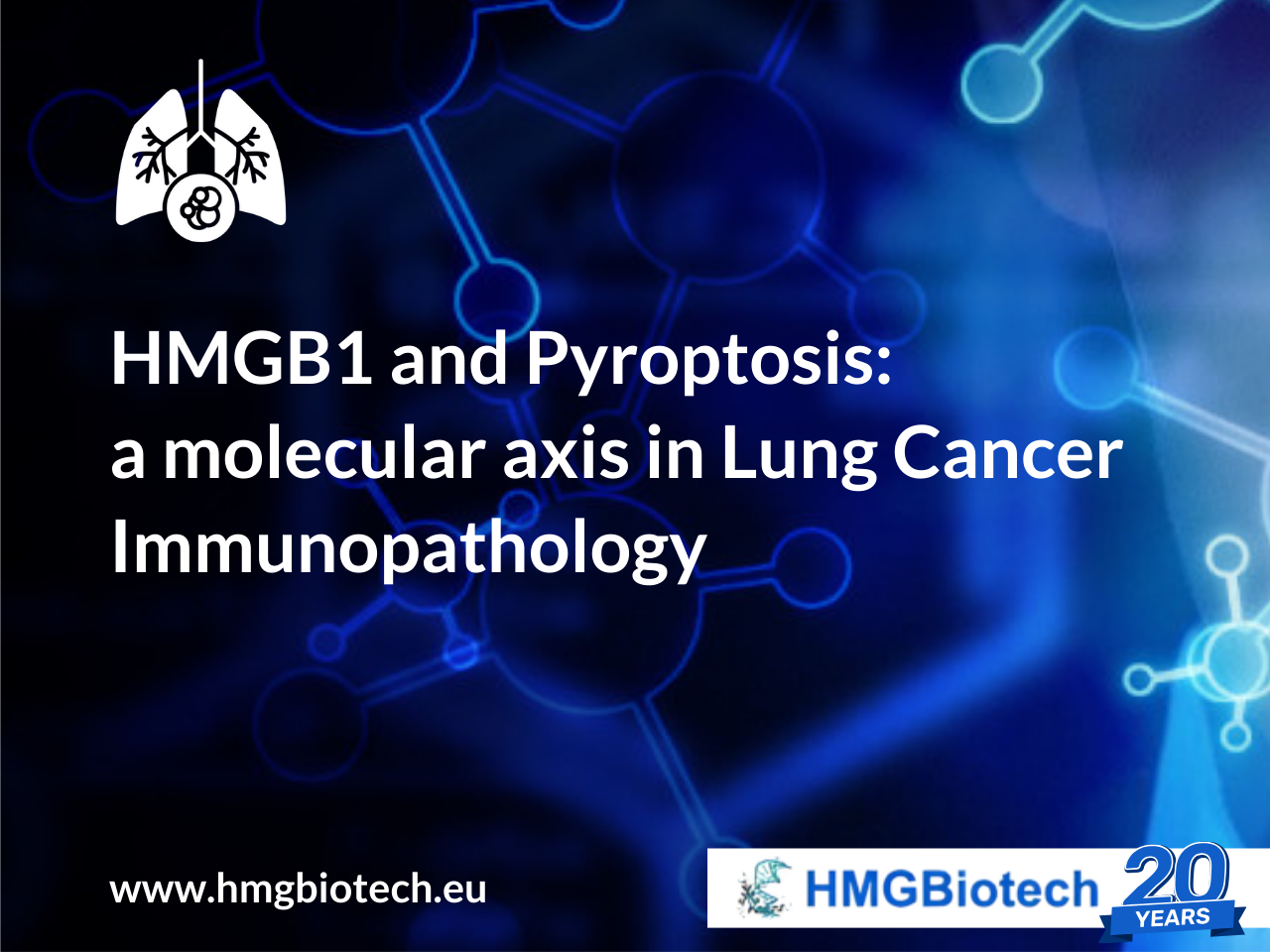Pyroptosis has gained attention as a new form of inflammatory programmed cell death (PCD) with far-reaching implications in cancer therapy. Unlike apoptosis, pyroptosis is caspase-mediated but culminates in membrane rupture, the release of cellular contents, and potent immune activation.
One of the central mediators of this immunogenic cascade is High Mobility Group Box 1 (HMGB1): a chromatin-binding nuclear protein that acts extracellularly as a prototypical danger-associated molecular pattern (DAMP).
Pyroptosis is typically initiated by pattern recognition receptors (PRRs) assembling into inflammasomes (e.g., NLRP3, AIM2), which in turn activate caspase-1. Activated caspase-1 cleaves gasdermin D (GSDMD), liberating its N-terminal fragment. This fragment oligomerizes and forms pores in the plasma membrane, facilitating cell lysis and the release of inflammatory mediators such as interleukin-1β (IL-1β), interleukin-18 (IL-18), and HMGB1.
Importantly, HMGB1 release is a hallmark of pyroptosis, distinguishing it from non-inflammatory death pathways. Once released, HMGB1 binds to receptors like RAGE (Receptor for Advanced Glycation Endproducts) and TLR4, thereby amplifying immune activation, promoting cytokine release, and recruiting immune cells into the tumor microenvironment.
HMGB1 as a driver of antitumor immunity
In the context of lung cancer, the pyroptosis-HMGB1 axis plays a multifaceted role:
- Immune activation: HMGB1 enhances dendritic cell maturation and antigen presentation, key to initiating adaptive responses against tumor antigens.
- Microenvironment modulation: By stimulating cytokine production and immune cell recruitment, HMGB1 contributes to reprogramming the tumor microenvironment from immunosuppressive to immunostimulatory.
- Therapeutic synergy: Standard cancer treatments—chemotherapy (e.g., cisplatin), radiotherapy, and emerging immunotherapies can induce pyroptosis in lung cancer cells, releasing HMGB1 and other DAMPs to augment therapeutic efficacy.
As research evolves, targeting the pyroptosis-HMGB1 axis presents a dual opportunity: promoting tumor cell death and enhancing systemic anti-cancer immunity. Exploring modulators of HMGB1 release or its receptor interactions could refine combination strategies in lung cancer treatment.
Contact us for your pre-sales questions about HMGB1
Read the full article about the study: https://pubmed.ncbi.nlm.nih.gov/39132876/



